DRAGONFLY WATCHING
Article and photography by Tony & Kathy deGroot
Bird watching has become a huge pastime and one of the most popular outdoor activities. And, rightfully so, as it is a very interesting pursuit. But as nature enthusiasts, we like to expand our interest to include other fascinating fauna.
Another great pastime is Dragonfly Watching. This can be just as challenging as bird watching as identification in the field can be difficult. However, once you learn the different species in your region, it will make the activity very enjoyable. Dragonflies and their close relatives, the Damselfly, are in the order of Odonatas. Although Dragonflies are large and very exciting, I think Damselflies equally interesting. Perhaps the pastime should be called Odonata Watching.
There are a lot of similarities between bird watching and dragonfly watching. Like birds, many dragonflies have special ways of perching. Some species like to perch on sticks and are very horizontal while others prefer a vertical perch like on a tree trunk. Other species can be often seen on flat areas such as the road or on the ground. Like birds, dragonflies can have different flight patterns and characteristics. Dragonflies also have beautiful striking colours on their bodies and occasionally on their wings like the colourful Twelve-spotted Skimmer below.
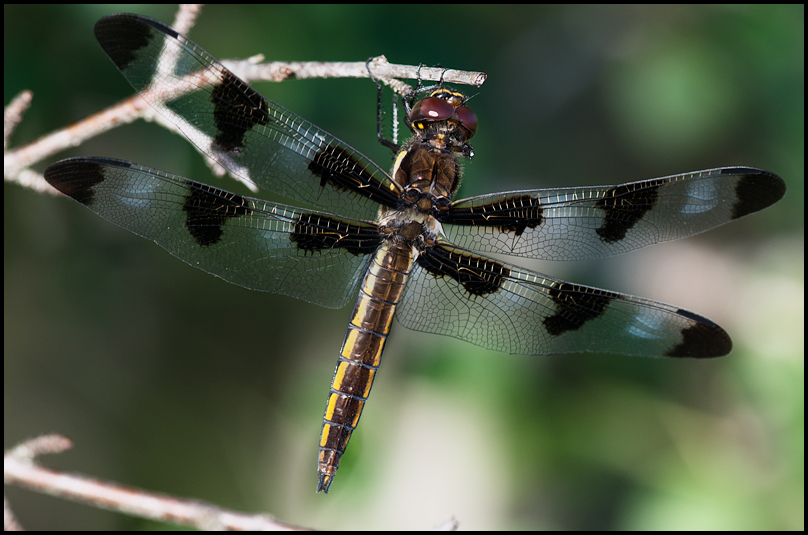
Since all dragonflies and damselflies start their life in water, rivers, streams, ponds and lakes are a great place to find them as some don’t wander too far from where they emerge. Other dragonflies will travel long distances including full out migrations in the spring and fall.
What I really like about dragonflies is their names, which are, arguably, the coolest in the natural world. Even the name “Dragon” fly is super cool. “Damsel” fly is also awesome in its descriptive way.
The most challenging part of Odonata Watching is identification. In fact, some species can only be identified by netting and inspecting them with a high-powered magnifying glass. Although we do own a special net for this purpose, we prefer not to bother them and an educated guess will be enough to satisfy the sighting. Saying that, many species are very easily identified.
One of the best ways to enjoy Odonatas is with the use of binoculars. As they perch to eat or rest, they will sit still if they aren’t approached too closely. Close focusing binoculars work best.
In the early morning, Dragonflies often have to warm up (and dry off) before they can take flight. Although this might make it easier to approach and perhaps, photograph, it is also much harder to find them. We were in Bruce Peninsula National Park with hundreds of Dragonflies fluttering all around. They would not stop or land for more than a second to two. We decided to forget about trying to photograph them that afternoon and planned to arrive early in the morning to find them dew drenched and perching. However, the next morning, when we arrived, we could not find them anywhere. It took a lot of searching before we finally found a couple of species.
If you thought bird photography was difficult, then welcome to the frustration of Odonata Photography. Yes, dragonfly photography can be challenging, but it is also rewarding. Although most images will be very documentary, some can be very pleasing and artistic.
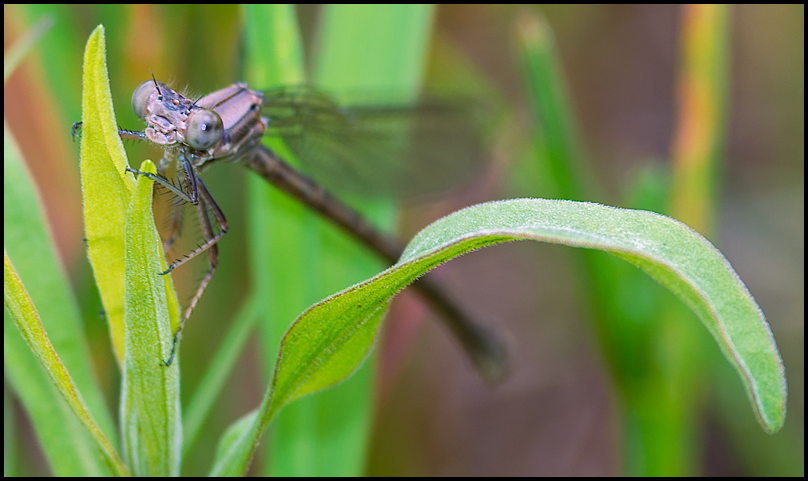
Equipment will require a macro lens for getting close-up shots when a dragonfly is approachable. We use tripods in most cases as sharpness and detail is usually desirable in this type of photography. This will cause you to miss a lot of images and the subject will often flee while you are trying to set up. But success will be yours once in a while, and I would rather have a few sharp images than 100’s of fuzzy and blurry images. Another way, also with a tripod, is with a 300mm lens. I found great success using this telephoto lens as there is much less need to get close to the subject and less chances of it flying away just when you are ready to push the shutter release. Using a flash setup without the need of a tripod can also provide some pleasing results.
There are good Odonata Field guides available for most regions. You can check out our field guide review section to get our opinion on some that we use. Naturally the guides will depend on the region you live or travel in. You can view more images in our galleries: Dragonflies <> Damselflies.
So, next time you are out in the field with your binoculars or camera and the birds seem to be hard to find under the midday sun, check out those amazing Dragonflies. Soon you will be getting out your Odonata Checklist and your guide books and you will be enjoying Dragonfly Watching!
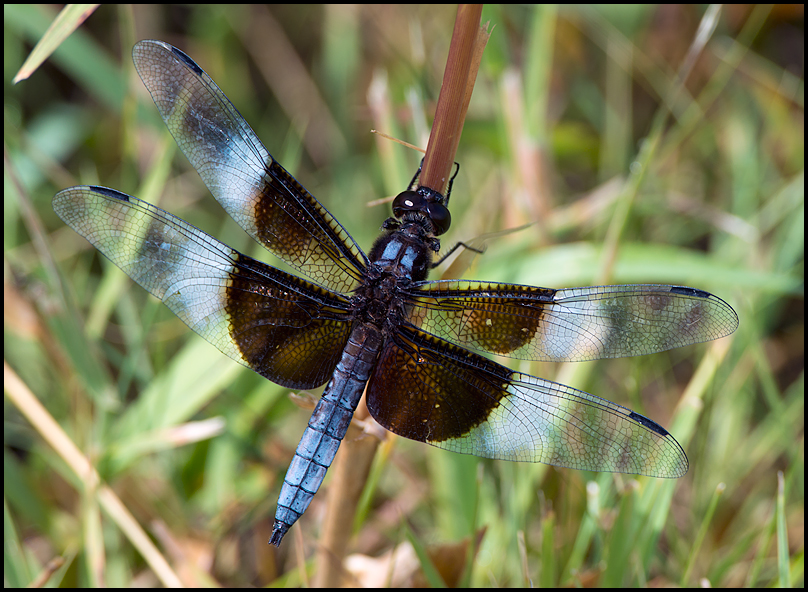 Widow Skipper
Widow Skipper
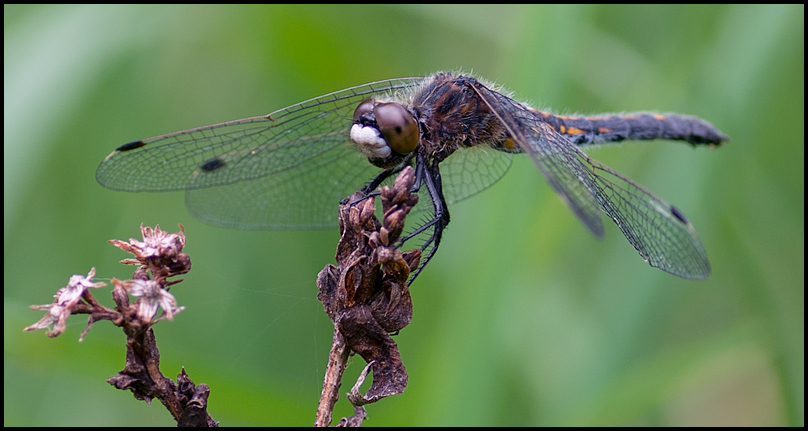 Dot-tailed Whiteface (female)
Dot-tailed Whiteface (female)
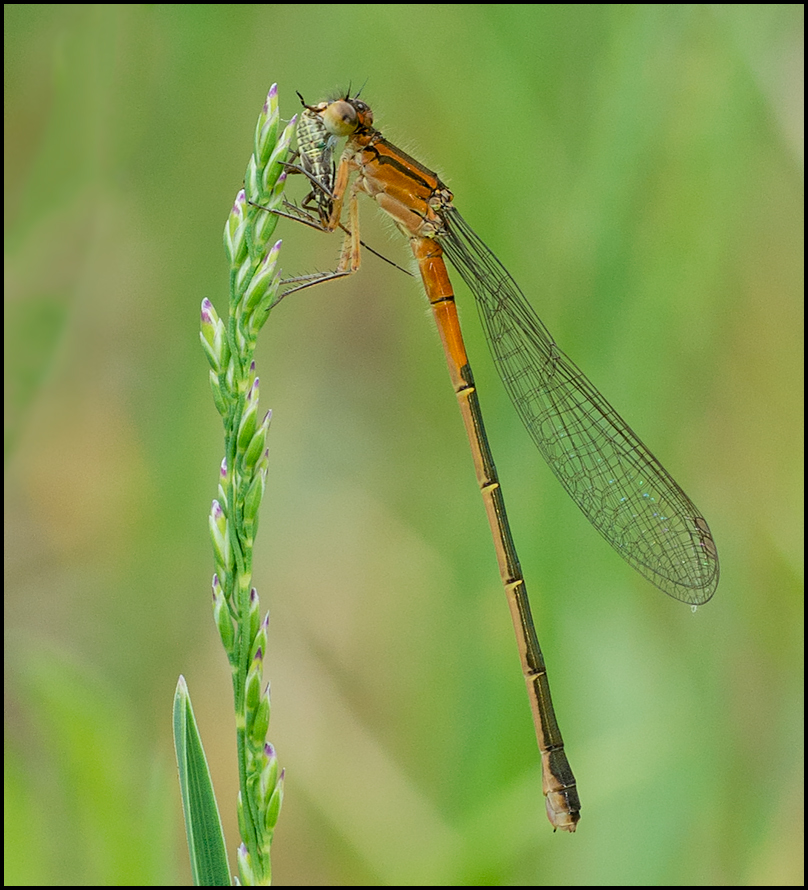 Eastern Forktail enjoying a meal
Eastern Forktail enjoying a meal
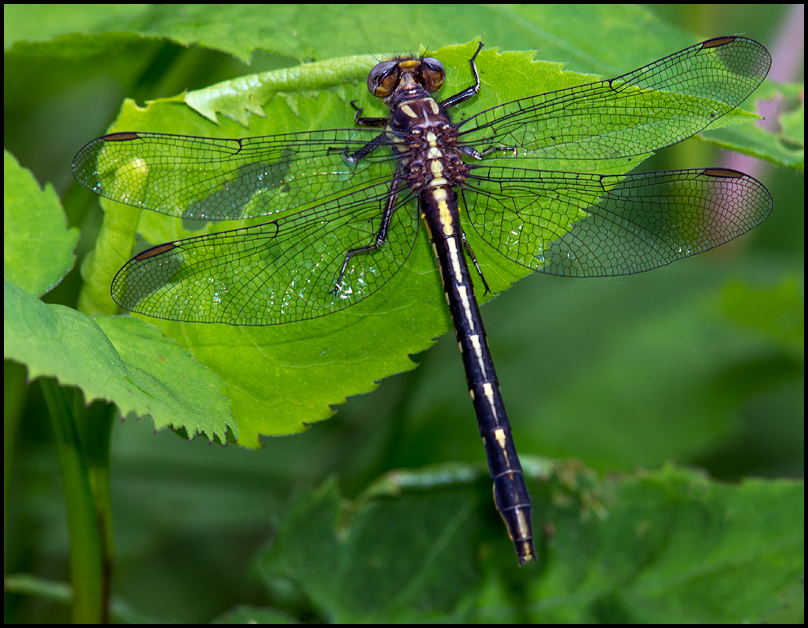 Ashy Clubtail
Ashy Clubtail
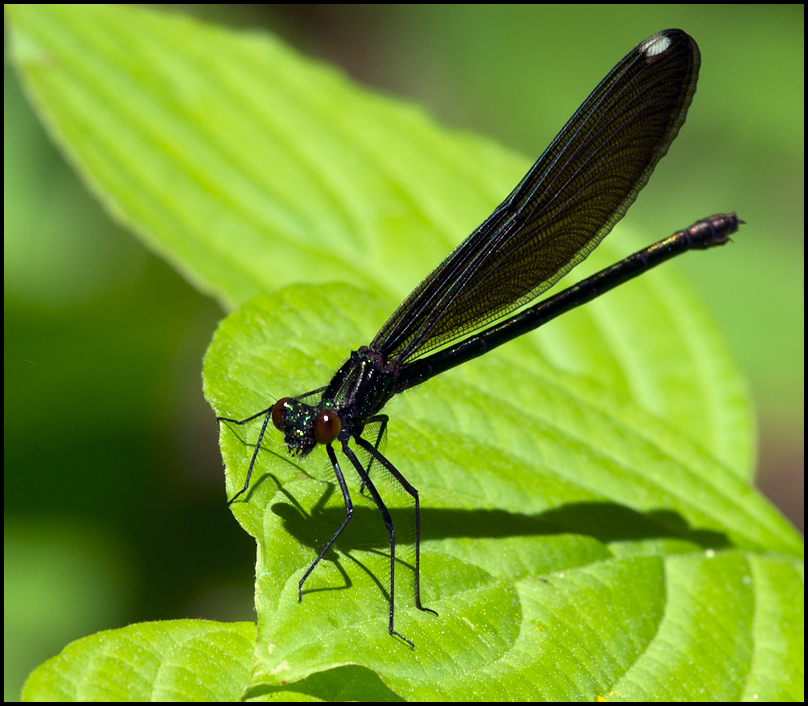
The Ebony Jewelwing is often found near streams
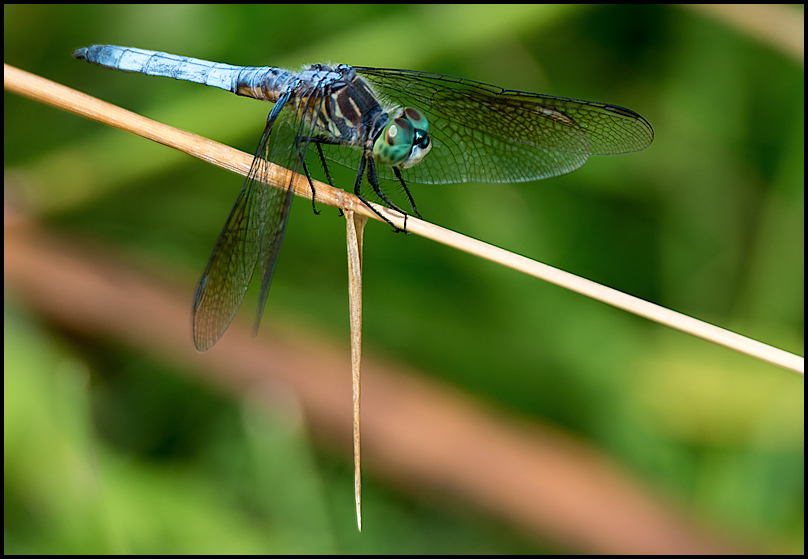
The colourful Blue Dasher
